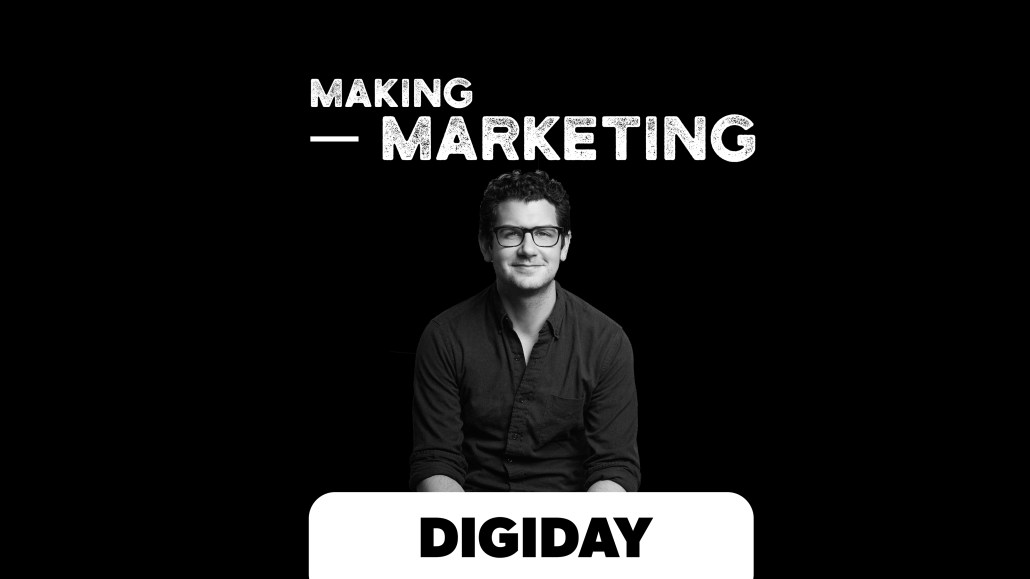‘We think of our category as comfort’: Brooklinen CEO Rich Fulop on expanding beyond sheets

Subscribe: iTunes | Google Play | Stitcher | RSS | Anchor
The direct-to-consumer playbook at this point is well known: Launch online with one product, expand to physical stores, and stretch into new products and even categories.
For Brooklinen, the online-born bedding brand, it’s no different. The company, which made about $48 million in revenue last year and says it’s on track to be a $100 million company, just experimented with a pop-up store in SoHo last year. It has also expanded to bath wear, with more to come soon. Founder and CEO Rich Fulop said it comes with taking a broader view of the category.
“You need a hero product that defines your business and you make your mark. For us, that is sheets,” said Fulop on this week’s Making Marketing podcast by Digiday. “We think of our category as comfort. The domain that we want to own is before work, after work and on the weekends, when you’re hanging out in your house. We want to play into a lazy homebody and a comfortable lifestyle. Staying in is cool. People binge-watch shows and get a bottle of wine. We want to enable people to do that.”
Fulop talks about the best marketing channels, building a creative team in-house and more. Edited highlights appear below:
Word of mouth should be the top marketing channel.
“The best marketing channel is referrals at any stage of the business. If the product is great, [people] should help you grow the company. You have to ask them and give them the incentive to do so. It’s also free if you do it right. At any given time, we have about 30 different channels; from billboards to subways to bus shelters to Facebook and Instagram. As you get smarter, you can do better segmentation. Giving the right message to the right person is the name of the game.”
Most DTC brands are doubling down on direct mail.
“When we started, direct mail is something I never thought I would ever do. Today, you get a lot of brands that are hitting you with direct mail. It’s evolved a lot over time. You can test a postcard versus a catalog and others. The cost of interaction is the bottom line. You want to get the most bang for their buck. It’s about finding the optimal value proposition for the customer.”
Don’t rule out any channels.
“[Metrics] tell us when a channel needs to be tapped out and has pushed us as far as it can grow. The targets we set on every marketing channel are all very different. It’s not one number. It’s hard to hold an Instagram ad to the same accountability as a bus shelter. It’s difficult to understand and measure the variables. TV, billboards and brick and mortar stores are things that the original wave of DTC brands would never do. I said that myself. Lo and behold, we just had a pop-up store and we’re carving out a retail strategy as well for the future.”
It’s important to keep returns and exchange rates down.
“It’s hard to sell people on [our] product spontaneously. It’s a considered purchase. Everyone has different decor, their aesthetics, the material and others. There’s a time period before they make that purchase. In that time, we want to inform them to make the right purchase. If someone reads something in our marketing funnel and they buy the product but it’s the wrong product for them, they will return or exchange and we don’t want that. It’s also a bad customer experience. We have an exceptionally low return rate. We think of it as an end-to-end experience.”
Strategizing is easy with in-house teams.
“We do everything in-house. Even for our pop-up, we did everything 100% in-house. We have 40 people in our team and a customer service team of 30 people. We used to outsource everything when we were a two-three person team. As time went on, we tried to internalize all of this because we wanted to be more strategic, more agile and cost-effective. Our creative team does out-of-home ads, script writing for TV commercials and everything you see on our website in terms of design. We have a retention marketing team, an acquisition marketing team and a communications team.”
More in Marketing

What TikTok’s e-commerce launch could mean for marketers and content creators
TikTok has officially launched its new e-commerce platform, TikTok Shop, earlier this month on August 1. Using the new e-commerce platform, brands and creators can sell products directly on the platform, potentially creating new revenue streams, and tap into the short-form video platform’s growing popularity.

‘The influencer industry can be really vile’: Confessions of an influencer marketer on the industry’s unfair hiring practices
While the influencer industry might sound exciting and like it’s full of opportunities, one marketer can vouch for the horrific scenarios that still take place behind the scenes.

Digiday+ Research: Marketers said revenue grew in the last year, with more growth expected ahead
After a tumultuous 12 months, marketers are getting a clear picture of how they really did during a time of true uncertainty. And, as it turns out, it wasn’t all that bad.
Ad position: web_bfu



